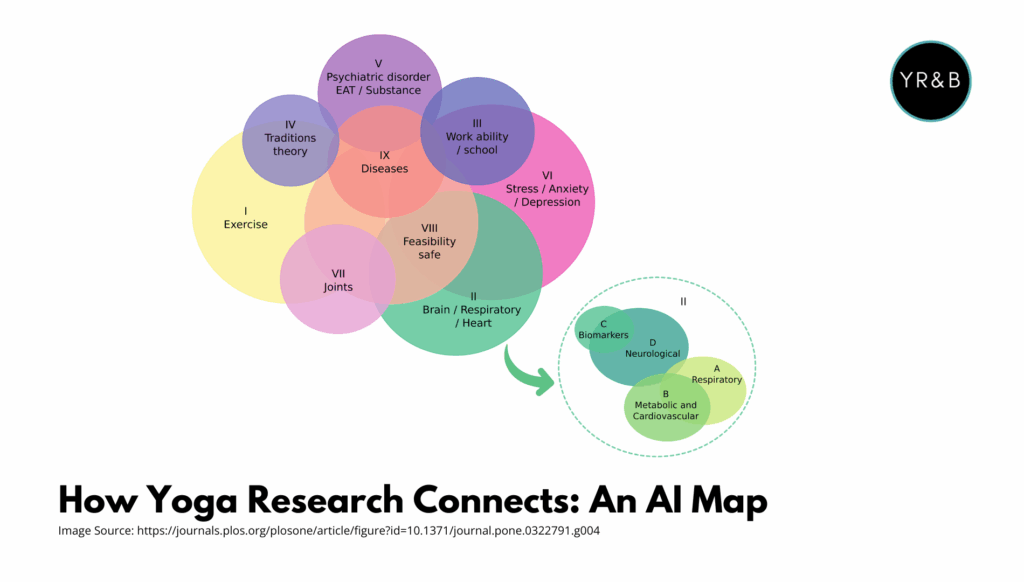What’s This Research About?
This paper provides an overview of how yoga has been studied across thousands of scientific articles. Using advanced text-mining and artificial intelligence tools, the researchers mapped out how topics in yoga research are related. They found four main themes: yoga as exercise, its effects on the body and physiology, its psychosocial and theoretical aspects, and its therapeutic contributions. The study also created tools to help other researchers navigate the vast literature more easily.
Purpose
The goal was to better understand how yoga research is structured and what major themes and gaps exist. By mapping the literature, they aim to help connect traditional yoga knowledge with modern science and guide future research directions.
Highlights:
- Identify trends and clusters in yoga research.
- Show how AI and text mining can organize complex, diverse studies.
- Support multidisciplinary research and collaboration.

TITLE: What are we learning with Yoga? Mapping the scientific literature on Yoga using a vector-text-mining approach
PUBLICATION: PLOS One
DATE: May 2025
AUTHORS: Rosangela Ieger-Raittz,Camilla Reginatto De Pierri,Camila Pereira Perico,Flavia de Fatima Costa,Elisa Garbin Bana,Leonardo Vicenzi,Diogo de Jesus Soares Machado,Jeroniza Nunes Marchaukoski,Roberto Tadeu Raittz
Vector Text Mining: An advanced data science method that turns words and documents into numbers (vectors) so computers can measure how similar they are.
How it works:
- Each word, phrase, or article becomes a point in a multi-dimensional “space” — think of a 3D map, but with hundreds of dimensions.
- The distance between points shows how closely related they are in meaning.
- Clustering and visualizations (like trees or scatterplots) help researchers see patterns that might not be obvious in regular reading.
Example in yoga research:
Instead of reading thousands of articles one by one, vector text mining groups similar topics (like breathwork, mindfulness, stress) and shows how they connect to physiology or therapy.
Vector text mining is valuable here because it organizes a scattered, inconsistent research landscape into a clearer picture. It’s like a map: it doesn’t give you all the details, but it shows you where the paths and gaps are. It won’t replace carefully reading strong studies — but it’s a great tool for understanding the big trends in how yoga is studied, where evidence clusters, and what’s missing.

